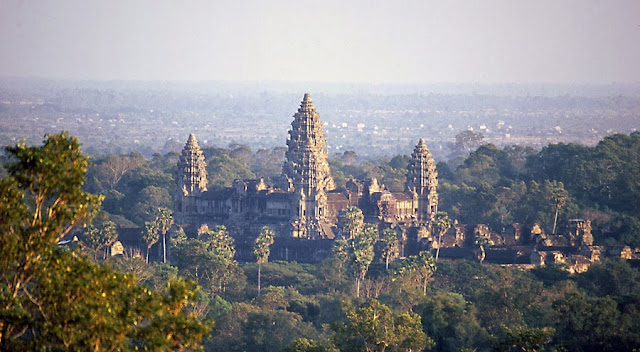In the period before the end of the 9th century, the king Yashovarman transferred the capital of Hariharalaya (in the region of Roluos) to Yashodhara (in actuality 'Angkor') by choosing the small hill of Bakheng (some 60m in altitude), to be the symbolic centre. Phnom Bakheng, in effect was given the Khmer name 'Vnam Kandal', or the 'Central Mountain'.
On the summit a pyramid was built, comprising of five tiers, surmounted by a central sanctuary that sheltered a linga. This structure differs from all other similar Angkorian architectural models as the interior was not filled with fine compacted sand, but rather this monument is constructed directly on the rock.
An extremely complex study by a scholar has resulted in an understanding of the number of towers and their position in space that demonstrates the ensemble is a materialization of the Indian cosmic calendar.
A Middle Period inscription records the name 'Bakheng', or 'Virile' that suggests (despite the fact the central sanctuary was covered by this Buddhist image) the earlier concept of a linga was still present in the historic collective memory. It is curious but significant to note that Muslim pilgrims left an inscription at the monument in Arabic praising Allah. This stele was removed in the 20th century for preservation reasons.

















